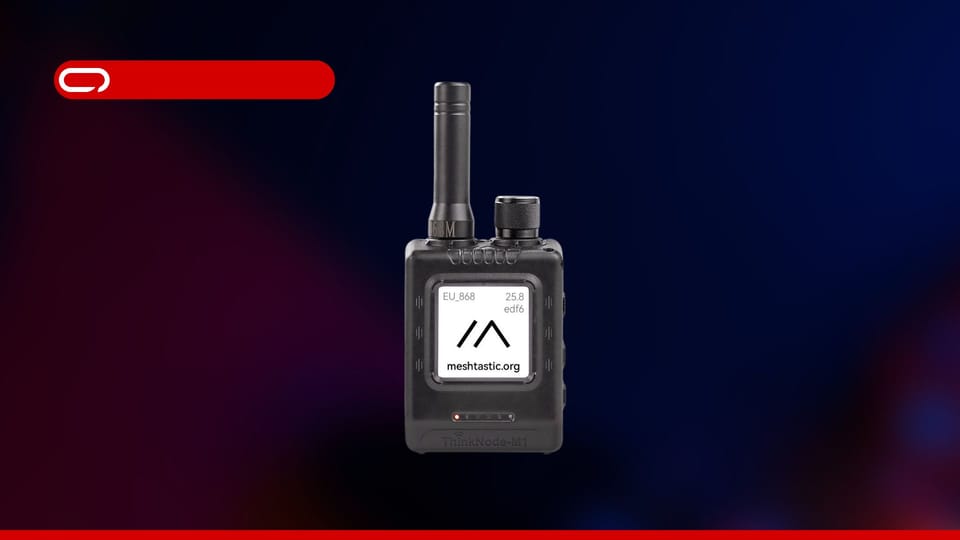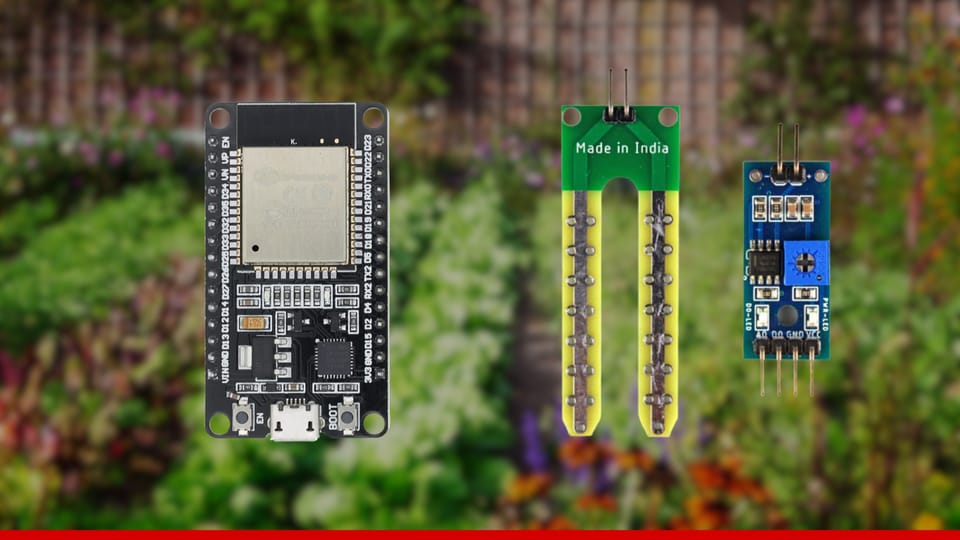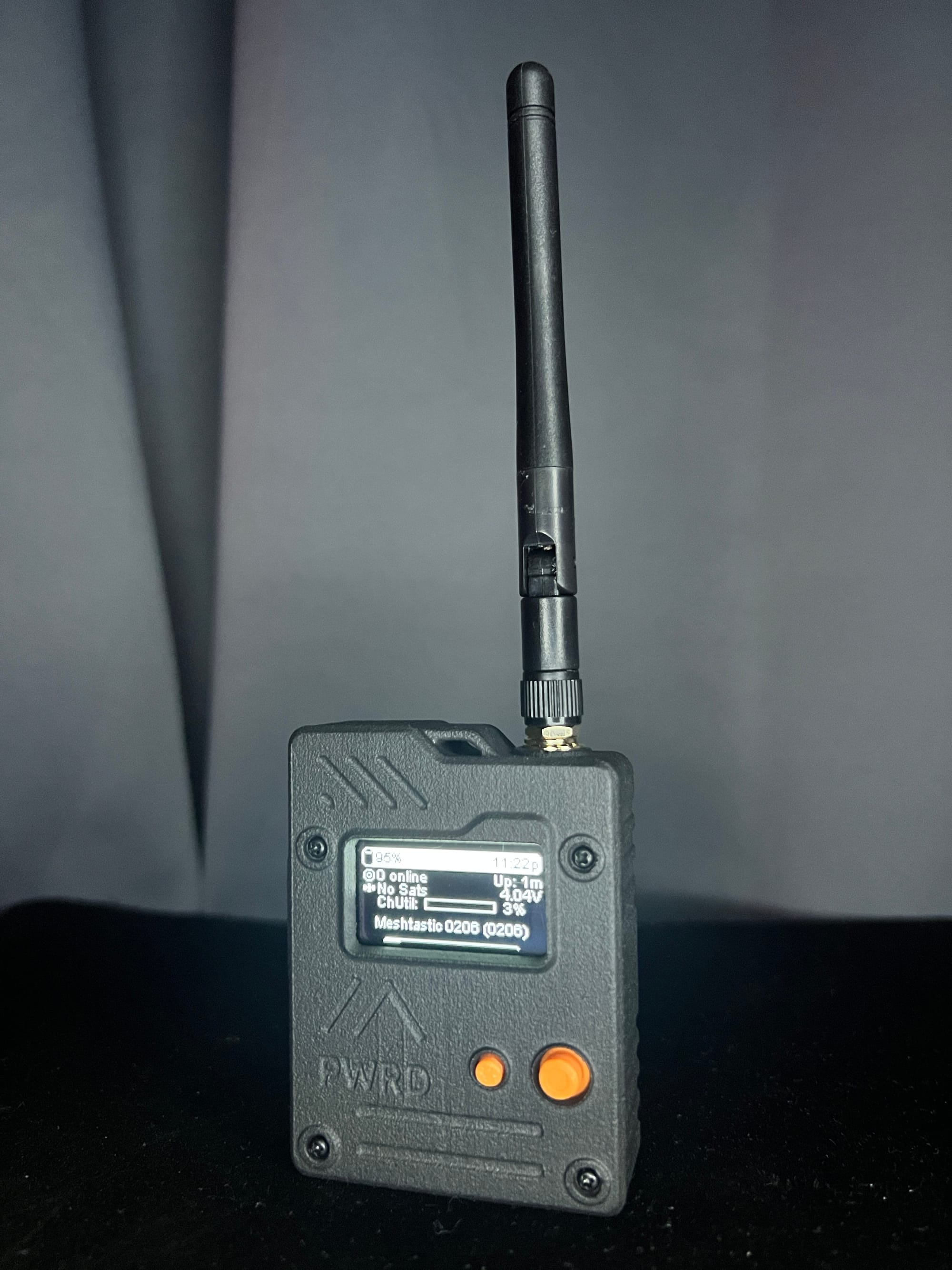ThinkNode M2 Review: The Tamagotchi-Sized Meshtastic Handheld
The ThinkNode M2 delivers a Tamagotchi-style, ultra-compact Meshtastic handheld with premium build, bright OLED, and surprisingly strong range. Its charm is undeniable, but is the adorable form factor enough to overlook the battery life?
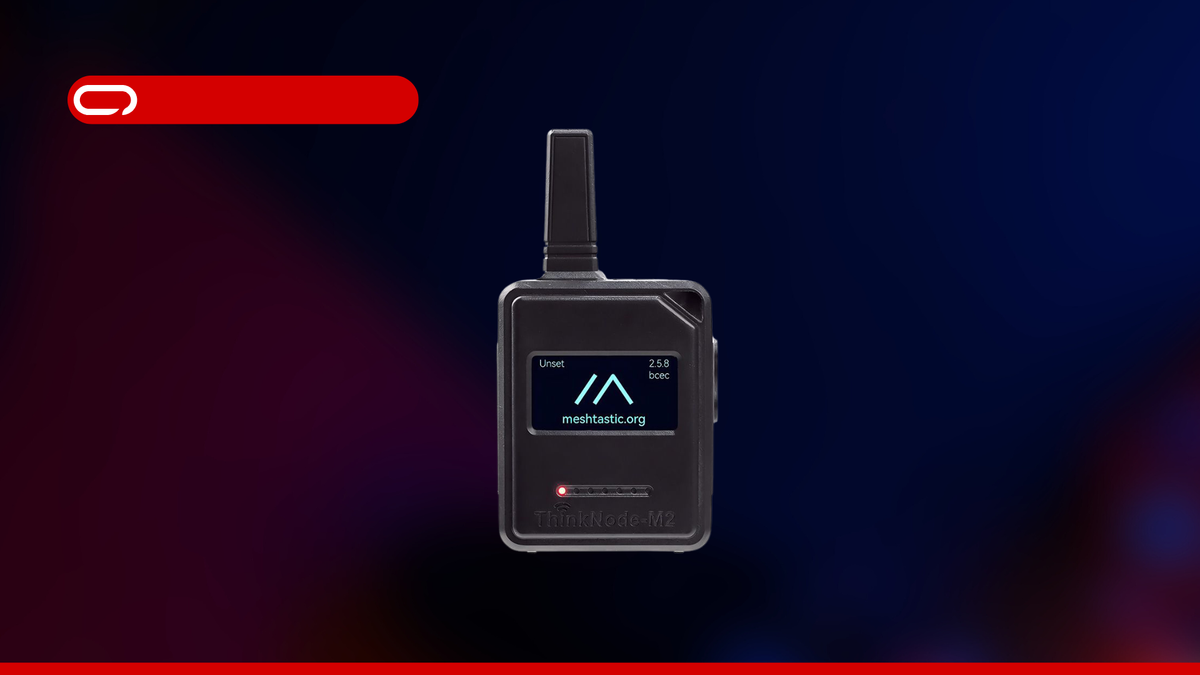
The ThinkNode M2 by Elecrow is a compact Meshtastic handheld that nails the form factor but stumbles on power efficiency. At $43.90 ready-to-use or $21.90 bare board, it's one of the smallest handhelds available, small enough to work as a keychain (though a bit bulky). With a 1.3" OLED screen, buzzer, and excellent build quality, it checks almost all the boxes. But there's a catch: it uses the power-hungry ESP32-S3, which limits battery life to around a day despite its tiny 1000mAh battery. Is the adorable form factor enough to overlook the MCU choice? Let's dive in.
Unboxing and First Impressions
The ThinkNode M2 arrives in simple yet very well designed packaging with everything you need to get started:
- ThinkNode M2 device (with or without case, depending on version)
- USB-A to Type-C cable
- User manual
Build Quality: Surprisingly Impressive
The build quality is really good way better than expected for the price. The injection-molded ABS case feels solid and well-finished, not cheap or flimsy at all. This isn't a 3D-printed enclosure; it's a properly manufactured product that feels premium in hand.
The form factor is where the M2 truly shines. It's the smallest ready-to-use Meshtastic handheld we've reviewed even smaller than the T1000-E, though noticeably thicker. It feels like a Tamagotchi, and honestly, it could work as a keychain (though it'd be a bit bulky for that). The compact size makes it incredibly pocketable and convenient to carry around.
Setup Notes
Setup was straightforward with no major issues. However, during battery testing, we encountered something unusual: when the battery gets very low, you'll hear a loud, non-default beeping sound. According to Elecrow's engineers, this happens because the power system and MCU become unstable at extremely low voltage. They're working on a firmware fix that will force a shutdown at a certain voltage threshold to prevent the uncontrolled beeping.
We also noticed the device sometimes shuts down at 30% battery instead of draining fully. Elecrow couldn't reproduce this issue in internal testing, so it might be device-specific or related to battery calibration. Something to keep in mind.
Features Overview
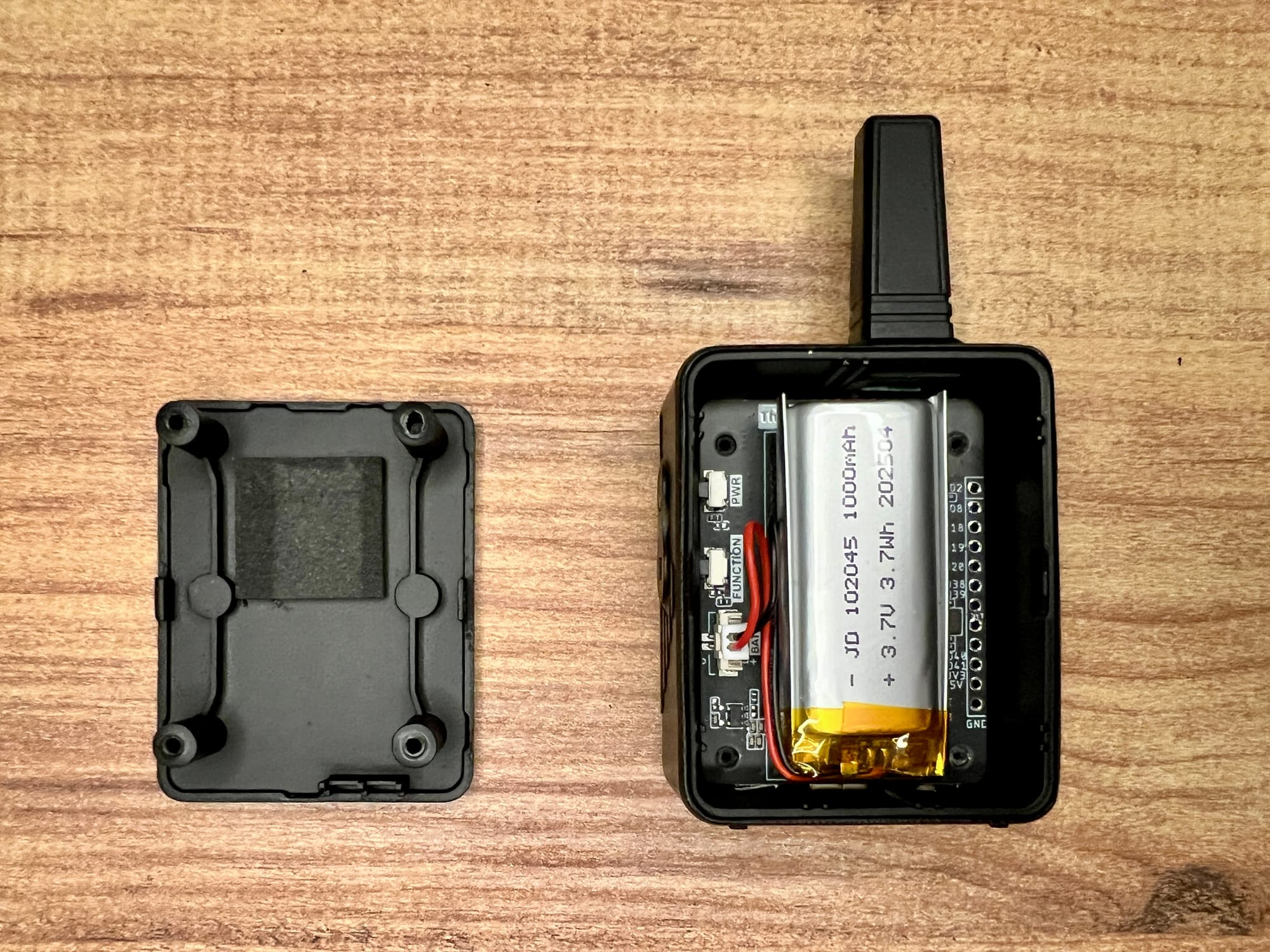

The ThinkNode M2 is even more compact than the M1, measuring just 51.5 by 37 millimeters without its case. It's essentially credit-card sized all be it bit thicker, yet it doesn't compromise on capability.
At its heart is the ESP32-S3, a dual-core chip that runs at up to 240MHz. It's a different platform than the M1's Nordic chip nRF52840, but it brings its own advantages: built-in Wi-Fi and Bluetooth 5.0, which opens up more connectivity options. For LoRa, it uses the same reliable SX1262 radio found in the M1, supporting both 915MHz and 868MHz bands.
The display is a 1.3" OLED screen with 128×64 resolution. Unlike the M1's e-paper, this one refreshes instantly, which makes navigation feel snappier. It's not quite as readable in direct sunlight, but the trade-off is a brighter, more responsive interface that works great indoors and at night.
Memory-wise, the M2 is well-equipped: 512KB of SRAM, 8MB of PSRAM for handling larger tasks, and 4MB of flash storage. That's plenty of headroom for Meshtastic and any custom configurations you might want to run.
The battery is slightly smaller at 1000mAh, but the device is also more compact, so runtime stays reasonable. Power consumption sits around 217mA at full tilt, dropping to 136mA when you turn the screen off, a simple way to extend battery life when you're not actively using it.
There's a buzzer for alerts, LED indicators for power and charging status, and a full set of buttons: power, function and the hard to reach reset. Everything charges and syncs over USB-C. The antenna is internal and uses an IPEX connector, though it's not user-upgradable.
With its case on, the M2 weighs just 50 grams. Without it, it's an ultralight 30 grams. The whole package feels almost toy-like in hand, but it's fully functional.
Like the M1, it ships with Meshtastic firmware pre-installed. Pair it with the app on your phone, and you're ready to join the mesh.
Flashing the Firmware
The M2 comes preflashed with Meshtastic, but if you want to update it, here's the process:
- Connect the Device: Use a USB-C cable that supports data transfer to connect the M2 to your computer.
- Visit the Flasher Tool: Open Meshtastic Web Flasher.
- Select Your Device: Choose ThinkNode M2 ESP32-S3 from the device list (there's no specific M2 option yet).
- Choose Firmware: Select the latest firmware version and click Flash.
- Perform Full Erase: Select Full Erase and Install, then click Update.
- Reboot: Once flashing completes, the device will reboot and be ready to pair.
Performance
Battery Life: The ESP32 Trade-off
Battery life lasted around one day or less with typical use, minimal screen interaction. For a 1000mAh battery, this isn't terrible, but it's nowhere near the multi-day performance we've seen from nRF52-based devices like the Thinknode M1 (almost 5 days!).
The culprit? The ESP32-S3. It's a powerful, feature-rich MCU with Wi-Fi and Bluetooth, but it's notoriously power-hungry. On a device this small with such a tiny battery, the ESP32 feels like a mismatch. Sure, you get Wi-Fi connectivity and more flexibility, but at what cost? A day of battery life on a handheld means you're charging it nightly not ideal for a device meant for outdoor or emergency use.
We also encountered the low-battery beeping issue mentioned earlier, and the device occasionally shut down at 30% instead of fully draining. Elecrow is working on firmware fixes for these quirks.
Range & Connectivity: Surprisingly Strong
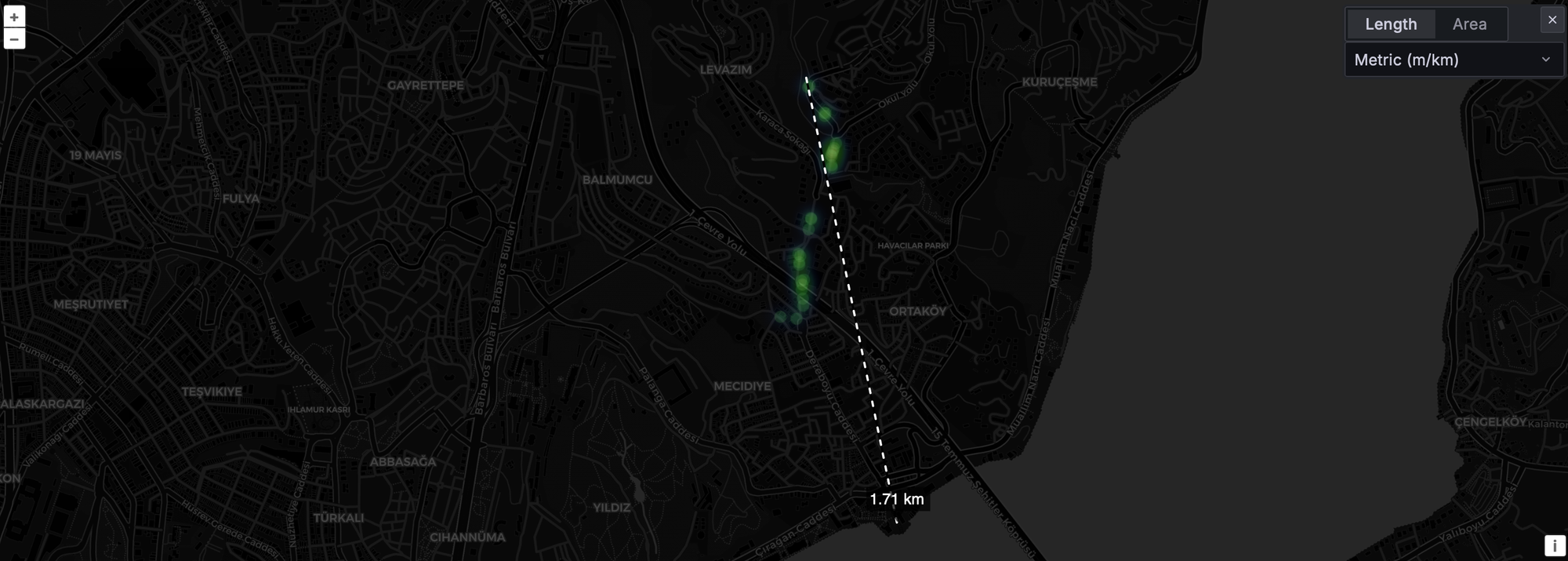
Despite its small size and non-upgradable PCB antenna, the M2 delivered impressive range: around 1.71 km in urban testing. This is very close to the T1000-E's excellent 1.8 km range.
What stood out even more was the signal stability. The M2 maintained a much steadier connection with way more ACK (acknowledgment) messages compared to the ThinkNode M1. If you're familiar with the M1, you'll notice a clear improvement in reliability here.
The PCB antenna is not upgradable, there's no external SMA connector, but honestly, it performs well enough that most users won't feel the need to upgrade. If range is your absolute priority, devices like the Wio Tracker L1 Pro or WisMesh Pocket V2 with external antenna options might be better, but for a compact handheld, the M2 holds its own.
Screen & Build Quality: Excellent
The 1.3" OLED screen is really nice, bright, crisp, and very readable outdoors. It's a noticeable step up from the common 0.96" displays found on cheaper DIY boards. Text is clear, menus are easy to navigate especially with how they utilize the function and power button as power button used for navigation unlike the ThinkNode M1 where they wasted a button for screen light toggle, and the larger size makes a real difference in usability.
Build quality is top-notch. The injection-molded case feels solid, the buttons (except reset) are easy to press and responsive, and the overall fit and finish are excellent. The LED indicators (power and charging) are well-placed and useful for at-a-glance status checks.
The only minor complaint: the reset button is hard to reach, likely to prevent accidental presses. Not a dealbreaker, but worth noting.
Usability & Experience
What Works Well
- Buzzer: Yes, it works! The buzzer provides audible feedback for notifications, which is a must-have for any handheld with a screen. No more constantly checking your device, you'll know when a message arrives.
- Screen: The 1.3" OLED is bright, readable, and responsive. One of the best screens in this price range.
- Buttons: Power and function buttons are all easy to use and feel solid. Reset is harder to reach, but that's intentional. Really loved that they utilized the power button in navigation unlike the ThinkNode M1 where they wasted a button for screen light toggle.
- LEDs: Power and charging indicators are well-placed and useful.
- Form Factor: Tamagotchi-sized, super portable, and feels great in hand. This is the M2's killer feature, it's just cute and compact in a way that most Meshtastic devices aren't.
The ESP32 Elephant in the Room
Here's the thing: the M2 has one of the smallest, most attractive form factors we've seen in a ready-to-use Meshtastic handheld. It's adorable, pocketable, and well-made. But then... they chose the ESP32-S3.
Don't get me wrong, the ESP32-S3 is a great MCU. It's powerful, has Wi-Fi and Bluetooth, and is extremely flexible. But on a device this small with a 1000mAh battery meant to be a portable handheld? It feels like the wrong choice.
The nRF52840 would have been perfect here. Lower power consumption, longer battery life, and it still handles Meshtastic beautifully. Pair it with an e-ink display instead of OLED, and you'd have a multi-day handheld in this tiny form factor. Instead, you're stuck charging it every night.
Maybe it's a cost thing, the ESP32 is cheaper and more readily available. Or maybe Elecrow wanted the Wi-Fi features. Either way, it's a trade-off that hurts the M2's overall appeal.
That said, a day of battery life isn't bad, it's just not great for a handheld meant for outdoor or emergency use.
Expandability: Limited by Design
The M2 technically has GPIO access, but let's be real: at this size, expandability is more of a theoretical feature than a practical one.
There are no Grove connectors or easily accessible headers. If you buy the bare board ($21.90) and design your own case, you could theoretically add sensors or modules. But with the ready-to-use version ($43.90), the compact case leaves no room for expansion.
The "modular design" marketing feels a bit overstated. This is a handheld designed to work as-is, not a DIY tinkering platform. If you want true expandability, look at the WisMesh Pocket V2 or WisMesh Board ONE Pocket.
Pricing: A Tough Sell in a Competitive Market
Here's where things get tricky:
- Bare Board: $21.90
- Ready-to-Use (with Case): $43.90
That's $22 for the case alone, which feels a bit steep, but the injection-molded case is genuinely high quality, so maybe it's justified.
The Competition:
At $43.90, you're competing with:
- Wio Tracker L1 Pro ($42.90): GPS, joystick, solar support, buzzer, 2000mAh battery, ~2.5 days battery life, BaseUI support. Bigger, but way more features and better battery life.
- T1000-E (~$40): Smaller form factor, similar range, integrated GPS, temperature sensor, water-resistant, molded plastic. No screen, but longer battery life.
- WisMesh Board ONE Pocket ($46.97 without GPS): 1.3" screen, modular expansion, better build quality. More expensive, but more versatile.
At $21.90 bare board:
- XIAO ESP32S3 + Wio-SX1262 ($9.90): Way cheaper, highly customizable with expansion boards, but requires DIY assembly and has less range out of the box.
- Heltec V3 (~$21): Includes a screen, similar ESP32 performance, but larger and less polished.
The Verdict on Pricing:
The bare board at $21.90 is reasonably priced ,especially that it comes with battery, for what you get, solid hardware, good range, and a compact design.
The ready-to-use version at $43.90 is harder to justify. Yes, the form factor is adorable and unique. Yes, the build quality is excellent. But you're paying a premium for aesthetics and compactness while getting:
- A smaller battery (1000mAh vs 2000mAh on the Wio L1 Pro)
- Shorter battery life (~1 day vs 2.5+ days)
- The power-hungry ESP32 instead of the more efficient nRF52
- No expandability
- No solar support
- No GPS
If the M2 used the nRF52 and offered 2-3 days of battery life, it'd be a slam dunk at this price. As it stands, it's a tough sell unless you really value the compact form factor above all else.
Final Thoughts: Who Should Buy the ThinkNode M2?
The ThinkNode M2 is a fascinating device that almost nails it. It has the best form factor we've seen in a ready-to-use Meshtastic handheld, compact, adorable, and genuinely well-made. The 1.3" OLED screen is excellent, the buzzer works great, and the range is surprisingly strong for a non-upgradable PCB antenna.
But the ESP32-S3, while feature-rich, feels like a mismatch for this form factor. With a 1000mAh battery, you're getting around a day of use, not terrible, but not competitive with nRF52-based handhelds that last 2-3+ days.
Our Take:
The M2 is a good device that could have been great. If Elecrow had gone with the nRF52840 and an e-ink display, this would be the ultimate compact handheld. As it stands, it's a solid option for users who value aesthetics and portability over raw battery performance. Like they have the ThinkNode M5 which is basically a ThinkNode M1 with ESP32-S3. This could have been easily a killer device if it was nRF52840.
At $43.90, it's slightly overpriced compared to the competition, but if you're not finding any other handhelds with this form factor that you like, the M2 is still a respectable choice. The market for ready-to-go handhelds starts at around $40, and the M2 sits right in that range. Just know what you're getting: a beautiful, tiny handheld with okay battery life and great range.
If Elecrow releases an M2 v2 with an nRF52 and better battery optimization, it'd be an instant recommendation. Until then, the M2 is a niche device for users who value form factor above all else.

